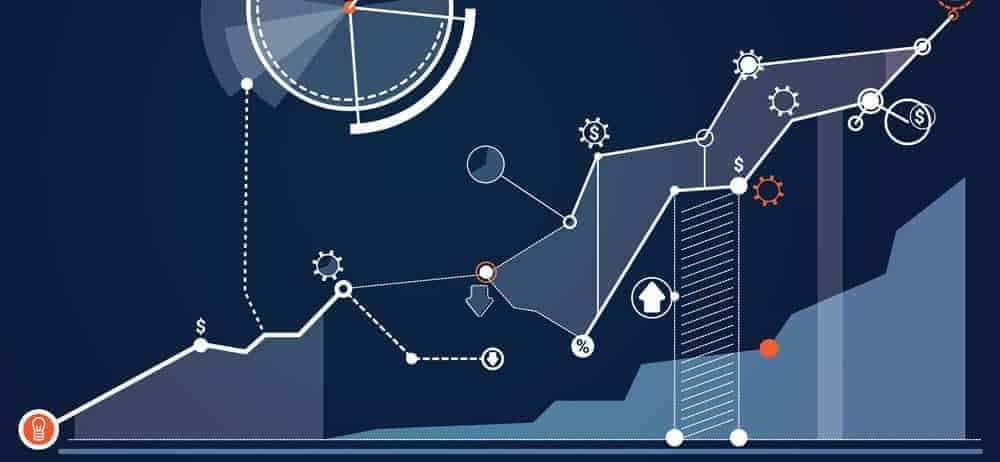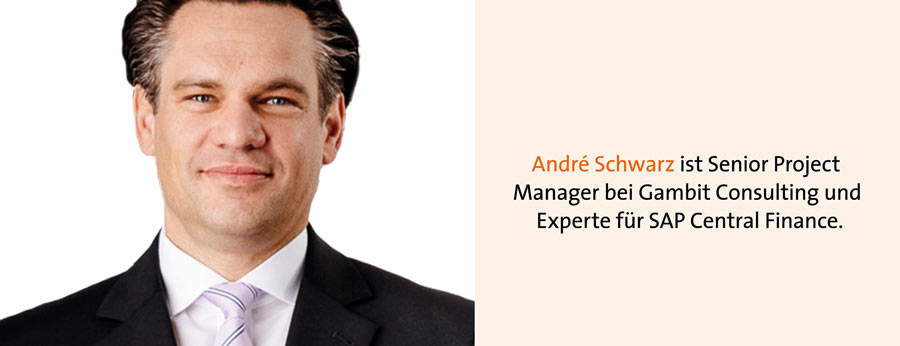The digital are eating the analog


Central Finance is based on SAP S/4 Hana technology and enables a centralized financial system into which data from SAP and non-SAP ERP systems with different data structures can be transferred in a harmonized manner.
The various data structures from Financial Accounting and Controlling, such as G/L accounts, profit centers or cost objects, can be mapped in Central Finance to a central structure that meets current management, control and governance requirements by using assignment rules.
The duplication and transfer of source data from the heterogeneous source systems to the SAP Central Finance system takes place in real time, without interfering with the operational systems.
These previous IT and SAP systems or system landscapes can therefore remain unchanged and will only be connected to the new SAP Central Finance system.
The relevant financial documents that have already been entered are forwarded there and posted in SAP Central Finance under new document numbers, whereby these are referenced with the original document numbers of the source systems.
Due to highly complex IT landscapes that have grown heterogeneously over the years or have been purchased, it is becoming increasingly difficult for the finance departments of companies to provide management with timely reports and analyses from the various IT and ERP systems.
The high process dynamics of digital business models will further exacerbate this challenge. "The fast eat the slow" is truer than ever. Updated, it should read: "The digital are eating the analog."
Customers, whether companies or individuals, can nowadays rely on an infrastructure that enables them to conduct business globally at any time and from any location.
This poses a particular challenge for companies' ability to provide information and make decisions. To ensure that the necessary quick decisions also become good decisions, reliable information is needed that is accessible in real time.
For corporate CFOs, SAP enables the single point of truth with SAP Central Finance:
- Harmonized financial data incl. insight into position details and source documents of the source systems
- Real-time replication and reporting at group level
- Streamlined and accelerated closing processes
- Harmonized data for integrated planning
- Expansion of value-adding functions, for example the expansion of consolidation capabilities (Central Consolidation)
Simplified introduction of shared services
SAP customers who have to work with complex and heterogeneous system landscapes have the opportunity to obtain a completely new transparency in the financial area with manageable effort by implementing SAP Central Finance.
In this centralized financial system, the latest S/4 Hana innovations can be leveraged for reporting, including the flexibility and speed offered by Universal Journal and Hana.
Another evolutionary step is to use the centralized data from the Central Finance system for operational processes in shared service organizations.
Accounts payable and accounts receivable are often combined into these service organizations, where financial services are provided to multiple business units.
The finance department can act in a globally uniform manner both in its financial shared service centers and in its processes in the national companies. SAP Central Finance is the solitary data basis for handling operational processes and improves the global scalability of these processes as well as governance.
Employees no longer have to deal with updating master data or transactions in multiple ERP systems, but can focus on a single system.
This results in an improvement in work quality and efficiency - especially when the SAP Master Data Governance (MDG) component is used in addition to SAP Central Finance.
MDG ensures that master data can be managed professionally and globally in a uniform manner and distributed to the connected SAP and non-SAP systems.
The entire finance area benefits from the process simplification of Shared Services, as transactions and analyses are merged. Reports, planning and predictive functions are provided on a role-based basis and are directly available in the context of the data of the business process currently being processed (Figure). This enables data-driven decision-making with the right information in the right place at the right time.

M&A: Transparency before integration
M&A activities enable companies to grow faster, but also bring with them complex challenges. The integration of the IT of an acquired company into the system landscape of the buyer and the preservation of data integrity are among the major challenges of an M&A deal.
The usual consolidated reporting and central process execution must suddenly process decentralized and heterogeneous data sources, which means a considerable additional effort for the provision of management key figures.
In the context of M&A transactions, SAP Central Finance offers an efficient way to connect acquired companies with SAP and non-SAP landscapes to central process execution and consolidated reporting in a simplified manner.
Acquisitions no longer have to result in supporting and maintaining a decentralized network of source systems. This opens up the possibility of ensuring transparency for the acquired companies again at a very early stage, even in the event of high acquisition activity.

Chance for the one truth
Heterogeneous master data is like a firmly applied handbrake for consistent and efficient processes. However, the required master data harmonization is a highly complex challenge.
With the implementation of SAP Central Finance, organizations are offered a simplified way to harmonize and improve data quality (SAP Master Data Governance).
In contrast to posting processes in decentralized SAP systems, SAP Central Finance offers the significant advantage of master data mapping in the central system even before postings are made.
As a result, the various master data from the different source systems are harmonized during operation for use in Central Finance ("single point of truth").
Assignment rules to central master data are defined for master data such as accounts receivable and payable, general ledger accounts, cost centers or profit centers, so that harmonized financial reporting is achieved across the entire Group.
S/4 cornerstone
The introduction of S/4 Hana is a very complex IT project and a change project that should not be underestimated. This harbors the risk that organizations will not be able to rest for a long time and will not be able to concentrate on the actual business.
This does not have to be the case. An alternative process model, with which the essential advantages of S/4 can be realized in advance in a manageable project, is the introduction of SAP Central Finance.
SAP Central Finance can be used as an initial entry point for a step-by-step introduction of S/4 Hana. In the case of extremely heterogeneous system landscapes, it makes sense to consolidate the existing systems via SAP Central Finance instead of performing a time-consuming migration of the data to S/4 Hana in order to subsequently perform the complete transition to S/4 Hana.
This buys time to first harmonize, integrate and check the integrity of all finance and controlling processes in order to develop a detailed roadmap and reduce the complexity of the S/4 conversion.
The Central Finance implementation can therefore be regarded as a light version of an S/4 implementation project Master data of all modules can be standardized beforehand by a master data governance process, resulting in only one data basis.
All affected ERP systems continue to run without interruption and with real-time integration to Central Finance, despite the consolidation in Central Finance.
Conclusion: More perspective
The introduction of SAP Central Finance opens up a new quality of transparency in complex corporate structures, such as real-time replication and reporting at group level, accelerated integration of SAP and non-SAP systems, for example after reorganizations or M&A transactions, single point of truth of data and simplified introduction of shared service units.
The introduction of SAP Central Finance also unlocks a large part of the benefits of S/4. The complete implementation of S/4 Hana can now be planned along the new releases with the constantly expanded functionalities.








